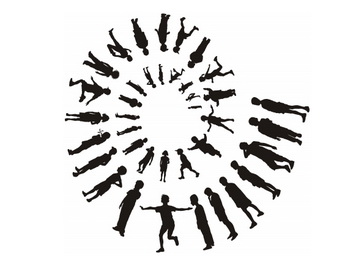 Author: Dragana Malidžan Vinkić (Social Inclusion Blog)
Author: Dragana Malidžan Vinkić (Social Inclusion Blog)
Once students start seventh grade, they are visibly different; they have new facial features as a consequence of new life experiences and knowledge. Another novelty is that the needs of students also change. In most cases, peers take over the main role in their lives, while us ‘grownups’ are out of the picture. They are frequently in conflict with authority, making our work, that of educational workers, difficult. The students suddenly find everything uninteresting, boring, lame, crap, stupid, and their vocabulary mainly boils down to those adjectives. At this age they show a greater resistance against studying than during previous years. Sometimes I think all seventh graders are fit for a year of individual educational plans. They feel there are changes happening, everything around them is somehow more demanding, but they do not know how to respond to the new challenges. Therefore, seventh grade represents adaptation to everything, at all levels.
However, kids are kids, having difficulties or not, and that’s how every student should be treated.
The development of students with difficulties in puberty also shows new emotional and physical changes. Stronger outpourings of emotion can occur, primarily anger, as well as withdrawal and depression. Some students may exhibit sexuality instinctively, through spontaneous/involuntary erections, masturbation, rubbing against things and objects. With some student with difficulties, such behaviour can also occur in lower grades. The need to be liked by society at all costs puts some of the students with difficulties into a situation where they publicly humiliate themselves. Everything you can think of can happen. If any of these types of behaviours are noticed, reacting immediately is important.
The correct reaction is not moralizing, but introducing new rules and starting new, more intense educational work with the student, intensified cooperation with parents/guardians, psychologists, pedagogists, defectologists, medical and social workers. Together with them we can help a student learn to control their urges, what represents socially acceptable behaviour and how to take care of themselves and their health, and perhaps most importantly, how to guard themselves and not let themselves become easy targets for bullies.
We cannot shut our eyes before the unpleasant things that happen among students. It is easier to resolve a problem, than pretend it does not exist and allow it to grow into events that could have tragic consequences for the children and the school.
(…)
The text in its entirety can be found on the Social Inclusion Blog.
 Government of the Republic of Serbia
Government of the Republic of Serbia















 pdf [271 KB]
pdf [271 KB]
Leave a Comment